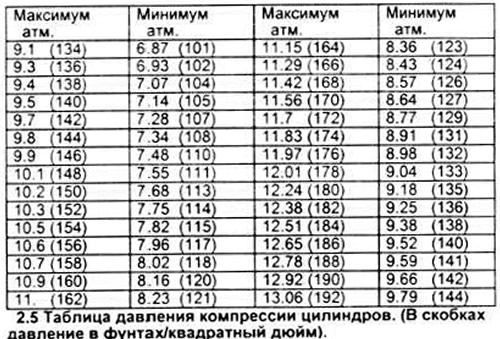Note: During the test, the normal operating temperature of the engine, the oil level and the full charge of the battery must be ensured.
1. Before removing spark plugs, clean everything in their area.
2. Remove the spark plugs from the engine.
3. Disconnect the coil wire from the center socket of the distributor cap and ground it to the engine housing.
4. By installing the compression sensor in the hole of spark plug No. 1. press the gas pedal to the floor to open the throttle valve. Rotate the engine after at least 4 compression strokes while watching the sensor. In a normal engine, compression rises rapidly. Low compression in the 1st stroke, with an increase in subsequent strokes, indicates wear on the piston rings. If the compression is low in the 1st stroke and does not increase in subsequent strokes, then this indicates leaks in the valves or a ruptured head gasket (another cause could be a cracked cylinder head). Record the maximum sensor reading obtained.
5. Repeat the procedure for the remaining cylinders and compare the obtained data with those given in the specification and table (see picture). The difference between the largest and smallest indications should not exceed the values indicated in the table.

6. Add a little engine oil to each cylinder through the spark plug hole, then repeat the test.
7. If compression increases after adding oil, then the piston rings are definitely worn out. If there is no significant increase in compression, then leaks occur through the valves or the head gasket. Valve leaks can be caused by burnt valve seats, or misaligned, cracked, or bent valves.
8. If two adjacent valves have the same low compression, then there is a high probability of a head gasket rupture between them. This is confirmed by the appearance of coolant in the combustion chambers or in the oil.
9. If the compression is higher than normal, then, perhaps, the combustion chambers are covered with soot. In this case, it is necessary to remove and clean the cylinder head.
Visitor comments